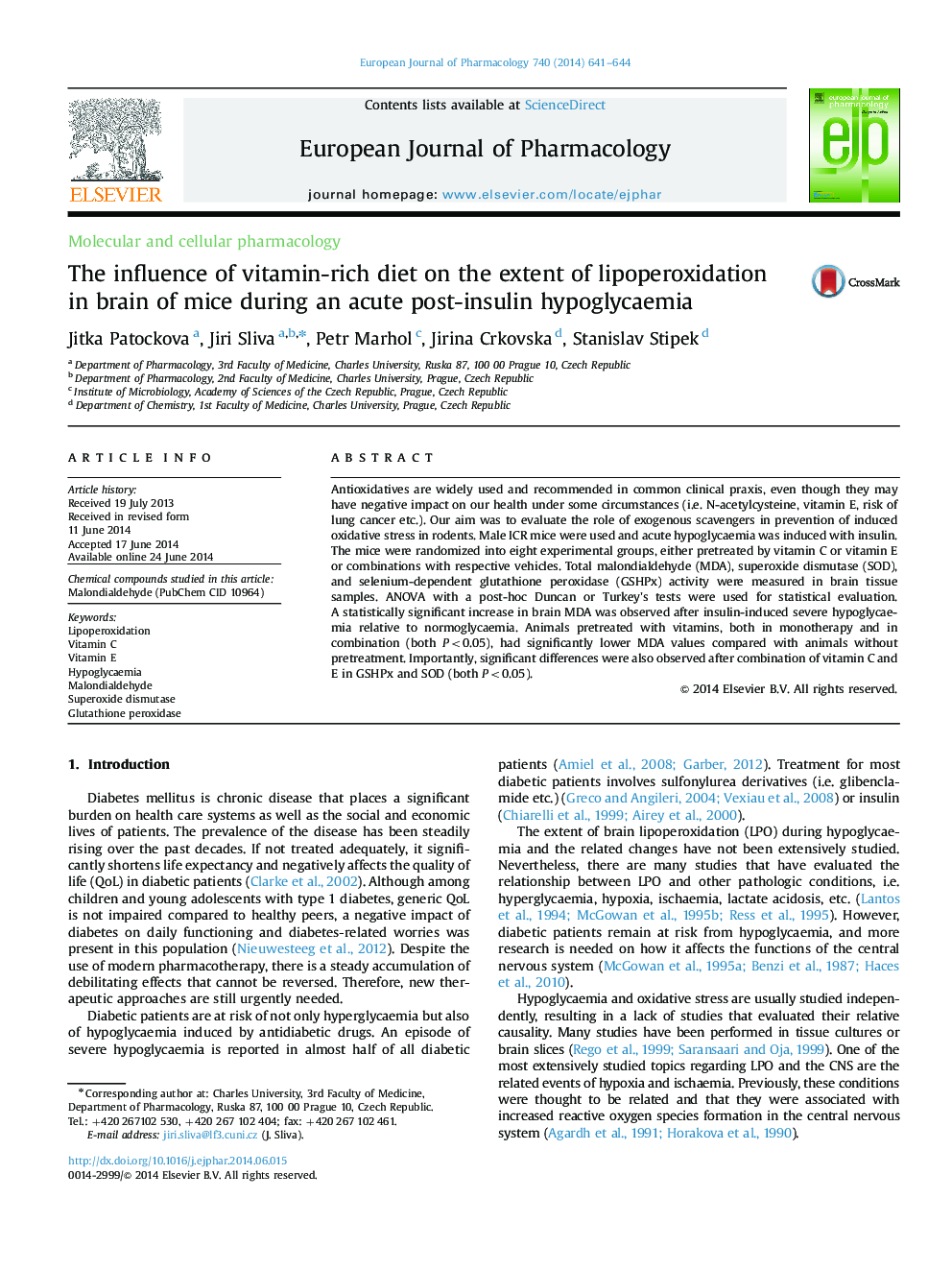| Article ID | Journal | Published Year | Pages | File Type |
|---|---|---|---|---|
| 2531618 | European Journal of Pharmacology | 2014 | 4 Pages |
Antioxidatives are widely used and recommended in common clinical praxis, even though they may have negative impact on our health under some circumstances (i.e. N-acetylcysteine, vitamin E, risk of lung cancer etc.). Our aim was to evaluate the role of exogenous scavengers in prevention of induced oxidative stress in rodents. Male ICR mice were used and acute hypoglycaemia was induced with insulin. The mice were randomized into eight experimental groups, either pretreated by vitamin C or vitamin E or combinations with respective vehicles. Total malondialdehyde (MDA), superoxide dismutase (SOD), and selenium-dependent glutathione peroxidase (GSHPx) activity were measured in brain tissue samples. ANOVA with a post-hoc Duncan or Turkey׳s tests were used for statistical evaluation. A statistically significant increase in brain MDA was observed after insulin-induced severe hypoglycaemia relative to normoglycaemia. Animals pretreated with vitamins, both in monotherapy and in combination (both P<0.05), had significantly lower MDA values compared with animals without pretreatment. Importantly, significant differences were also observed after combination of vitamin C and E in GSHPx and SOD (both P<0.05).
